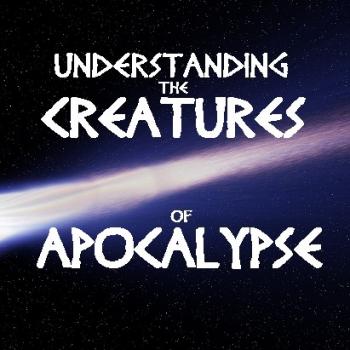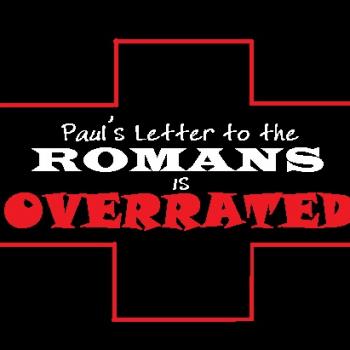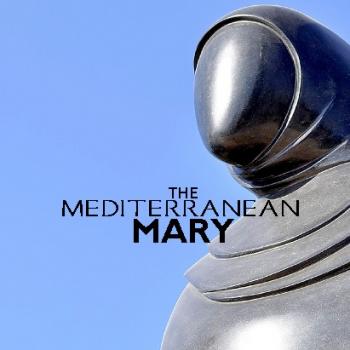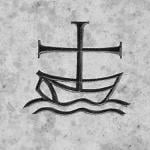
Don’t let spurious familiarity distort this Sunday’s Gospel, where folk healer Jesus helps Peter’s mother-in-law.
Spurious familiarity distorts our Bible reading. It also distorts what we hear being read from this Sunday’s Gospel, Mark1:29-39. This is a healing story. Some wrongly think that healing means curing. It doesn’t. Folk healer Jesus healed. But did Jesus cure people? Check out this brief video to learn the critical difference between healing and curing.
Folk Healer Jesus in Sunday’s Gospel
Let’s go through Sunday’s Gospel nice and slow.
On leaving the synagogue
STOP—what is a synagogue? A better question: what do you imagine Jesus is leaving? Is it a Jewish congregation? Are you thinking that Jesus exits a sacred building where a Jewish assembly meets for religious purposes, like instruction and worship? If so, you have wrong scenarios in your head keeping you from understanding what is being reported.
First, something shocking. Don’t look for any Jews or anything Jewish in the Bible. First-century Israelites were not Jews. I know, I know, but your English Bible tells you otherwise. Yeah, those translations suck—there are no Jews, Christians, or Pagans in the Scriptures.
Here’s a tour-de-force on the subject—
Jesus the Israelite Was Neither a `Jew’ Nor a `Christian’: On Correcting Misleading Nomenclature
So, What is the New Testament “Synagogue”?
In the first century, a synagogue was not a place of worship, Jewish or otherwise. It was an Israelite-male hangout place. Scholar Heather McKay has smashed anachronistic ideas concerning synagogues in Jesus’ day. They didn’t become places of worship or anything resembling modern synagogues until around 200 CE.
In the first century, a synagogue (from the Greek synagein) was a community center. There, Israelite men gathered to cuss, spit, laugh, hear readings from political-religious texts (like Isaiah and the Torah), and get into heated arguments over them (Luke 4:16-30). But they never gathered in them for worship services!—because there were none in synagogues back then. Besides, the first-century Sabbath was about rest, not worship. Later on, Palestinian Yahwists would transform the Sabbath into a day of worship in reaction to Messianist Israelites assembling on the seventh day for the Lord’s Supper.
Folk Healer in Capernaum
Jesus entered the house of Simon and Andrew with James and John.
STOP—Jesus is living in Jonah’s house (cf. Matthew 16:17). That’s his base of operations. He, who was from Nazareth, apparently died to his Nazareth-self and became kin with a faction of Capernaum people. Do you think that the historical Jesus had problems with his biological family?
Simon’s mother-in-law lay sick with a fever.
STOP—in the first-century world, there is no impersonal causality. If something happens, the question never is “WHAT happened?” but instead, “WHO did it?” The Fever (capital F) is a demon, one of the many other-than-human persons populating the Middle Eastern air. Fever is someone (a “who”), not something (a “what”), who afflicted Peter’s unnamed mother-in-law.
The Sick Woman
By the way, this sick woman is likely also Peter’s patrilateral aunt. Why? Because the ideal Biblical marriage partner is your patrilateral first cousin. And biblical marriage was patrilocal because the wife always moves into the husband’s father’s patriarchal compound. Don’t you love when Christians talk about “biblical marriage”? Here’s a secret—most don’t have a clue about it.
Why is Peter’s paternal aunt (i.e., his mother-in-law) not living in her husband’s house? Because he’s dead? If so, then she should be living with one of her sons. But what if she had no sons because they died? Then she would have returned to her father’s house. Indeed, she is in Peter’s (that is, Jonah’s father’s) house. See what is being suggested by “Mark” about her living there?
Looking carefully at her whereabouts, it appears that this unnamed Israelite woman is bereft of all living family that might care for her. Her illness is far worse than a high temperature—she has suffered a catastrophic loss of meaning. Her condition is worse than death in the Middle Eastern world. This is what the folk healer Jesus must heal—meaning, restore meaning to her life.
Folk Healer Story of Nameless People
Does the author “Mark” ever tell us her name? Nope—by the way, he never gives us his own name, either! After all, his readers are Mediterranean, and therefore his audience already knows everything they need to about her. They know she’s Galilean, a woman, and relating to famous people in the Jesus group. That’s enough for this world of dyadic personalities and stereotypes.
As I keep telling you, the Gospels were occasional writings, and the occasion of their composition was not an American setting. We Americans are the most individualistic culture of all time. In contrast, the Gospels come from collectivistic communities and are therefore alien to us.
They immediately told him about her.
Of course, they did! They are collectivists. For Mediterranean and Middle Eastern collectivists, everybody’s business is knowing everybody else’s business. There is no privacy in the cultural world of the Gospels!
First-Century Health Care from Folk Healer Jesus
[Jesus] approached, grasped her hand, and helped her up.
Then the Fever left her and she waited on them.
STOP—notice how the demon Fever left her? That’s an exorcism Jesus just performed! Jesus is remembered by “Mark” as being a shamanic holy person, a folk healer.
Again, check out the video at the beginning of this blog post to understand the difference between healing and curing, between illness and disease.
Western readers of the Bible from the 21st-century often (stupidly and unfairly) expect the Gospels, first-century Mediterranean documents, to provide exact biomedical information. What were the actual health problems and diseases (Mark 1:35) Jesus dealt with in the sick people he encountered? Did Jesus really cure diseased people? The following insights from medical anthropology help—
Understanding the Folk Healer
Sickness—a panhuman reality being interpreted variously in different cultures; a misfortune in human health and well-being, something wrong with the body.
Disease—a culturally-specific interpretation or explanatory concept of the reality SICKNESS, seen as a biomedical malfunction afflicting an organism.
Illness—another culturally-specific interpretation or explanatory concept of the reality SICKNESS, seen as a disvalued state of being in which social networks have been disrupted and human meaning lost.
Curing—the elimination of disease or the repair of the biomedical malfunction.
Healing—the restoration of meaning and wholeness to human life.
In short, the Bible deals with sickness as illness and looks to healing, not a disease, something to be cured. Don’t trust your English translations—disease and cure are always wrong choices to translate ancient concepts about sickness. Peter’s mother-in-law and “the whole town” (Mark 1:32-34) suffer because their social networks are shattered. This resulted in the loss of the meaning of life. Ultimately, healing is needed.
Shamanic Folk Healer
What to do? This looks like a job for a shamanic folk healer, not some biomedical health professional from the 2,000 years into the future!
Can we know the diseases afflicting Capernaum in Jesus’ day? We have some excellent ideas. But what were the exact biomedical problems in the people Jesus healed? What biomedical records do we have?
When it was evening, after sunset,
they brought to him all who were ill or possessed by demons.
The whole town was gathered at the door.
Note how “Mark” carefully mentions that the healings occurred following sunset? In other words, Jesus healed after the Sabbath was over.
Folk Healer Jesus in the Village
The NABRE renders the Greek in v. 33 as “town.” This is a well-meaning fix. The evangelist we call “Mark” calls Capernaum a polis, a major Mediterranean urban center. He’s wrong. Capernaum was a modest Galilean peasant village.
See “Mark” and the other Gospel writers are literate. Therefore, they are far removed from the starving Galilean illiterate setting of peasants like Jesus. So, whenever you read the Evangelists, expect them to be imprecise on several matters. Then you won’t be disappointed.
He HEALED many who were sick with various diseases,
and he drove out many demons,
not permitting them to speak because they knew him.
STOP—when it says that these demons knew Jesus, don’t read anything Trinitarian into that. These other-than-human persons didn’t see Jesus as the Second Person of the Most Holy Trinity, the eternally-generated Word or Son. All it means is they know he is an Israelite holy man and healer authorized to broker healings from the Realm of God.
Folk Healer in the Wilderness
Rising very early before dawn, he left
and went off to a deserted place, where he prayed.
STOP—in the cultural world of the Bible, human beings don’t travel to the un-humanized reaches. Those locations are the haunt of demons, all more powerful than human beings. Unless the human being is what anthropologists call a “shaman,” a holy person with divine authority over those demons. This detail expresses the remarkable quality of how powerful with God Jesus is.
Folk Healer vs Ancient Physicians
Many Christians today are mistaken about biblical “physicians” (like the Luke who associated with Paul, someone COMPLETELY DIFFERENT than the author of the documents called “Luke” and “Acts.” As Dr. John Pilch explains, ancient professional physicians were not healers. It was because it was too risky—to fail meant they could be executed! Instead, they talked a lot about illnesses, like standup philosophers (and not unlike many U.S. Catholic academics).
So when the New Testament infrequently talks about “physicians” (Mark 2:17; 5:26; Luke 4:23; 8:43; Colossians 4:14), you now have a culturally-plausible picture to work with.
Jesus was neither a biomedical “M.D.” nor an ancient philosophizing physician. Jesus was a folk healer. Many folk healers were working in Jesus’ day. They didn’t mind touching people, getting dirty, and risking failure. Starving Israelite peasants, seventy-five percent of Herodian Palestine, called upon these healers regularly and routinely.
Folk Healer, Not Intellectual Sage
The Synoptic Gospels presented a very different Jesus than the one proposed by the Jesus Seminar, namely the “Intellectual Sage.” Jesus was not that, folks. The Synoptics are honest to the historical folk healer, one with access to spirit-power over demons.
A folk healer like Jesus heals by restoring sick persons to their proper honor-rating. He restores their place in the community, healing their status and role.
Notice how folk healer Jesus takes this poor woman by the hand? He doesn’t mind touching her. His touch shares his power (Mark 5:30).
So we have to remove our American reading glasses when we dive into our Mediterranean Bible. Ultimately, we need a new set of lenses culturally-attuned to the Mediterranean, Otherwise, we won’t understand what is being said!
More to come, later…












